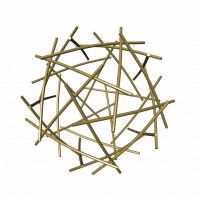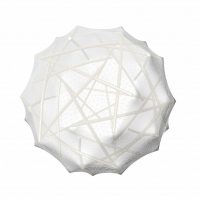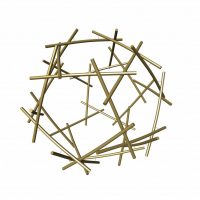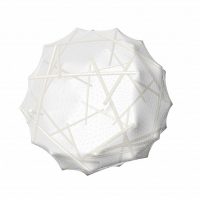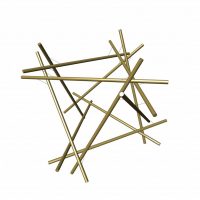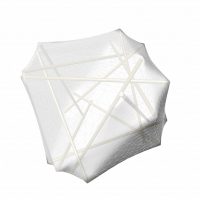6.4.03. Polyhedra to Rection

DESCRIPTION
This exercise builds up on the “Rection Simulator” exercise to produce rection structures from polyhedra. Rection structures have been defined by Andry Widyowijatnoko et. al (2019) as a synthesis of reciprocal and tensegrity structures. Rection structures rely on both the bending stress of rigid members and pre-stressed cables for their stability. The repetitive nature of polyhedra allows for the easy development of rection structures made from repeating components.
PROCEDURE
1. Use the RhinoPolyhedra plugin to generate a polyhedron of choice
2. Use NGon to turn the polyhedron’s face curves into an NGon
3. Convert the NGon into a Reciprocal Framework by controlling the rotation and scaling of the its edges
4. Identify the tension cables by finding the shortest connecting curve between related edges using the Curve Proximity button
5. Apply a similar logic as used in the “Rection Simulator” exercise to activate the structure
6. Note that by reducing the target length of the tension cable, the system is put under tension, providing greater stability
7. An elastic membrane can be simulated by projecting a convex hull, made from the end points of the compression elements, onto a slightly larger sphere; converting that hull into a highly subdivided mesh; and then pulling that mesh back to the structure while shrinking its mesh edges using Kangaroo 2
This exercise is using Grasshopper version 1.0.0007
References:
Widyowijatnoko, A., Irwanuddin, I. & Aditra, R.F. Rection as a Synthesis of Reciprocal and Tensegrity Structure. Nexus Netw J 21, 465–478 (2019). https://doi.org/10.1007/s00004-019-00443-6
Daniel Piker, Kangaroo Physics (by Daniel Piker), https://www.food4rhino.com/app/kangaroo-physics, Accessed August 6, 2020
Petras Vestartas, Aryan Rezaei Rad (2021). NGon: Tool for Mesh Processing and Timber Engineering Design. https://doi.org/10.5281/zenodo.4550592

